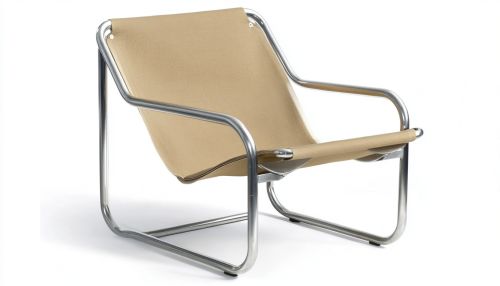Marcel Breuer
Early Life and Education
Marcel Lajos Breuer, born on May 21, 1902, in Pécs, Hungary, was a pioneering architect and furniture designer. He is widely recognized for his contributions to the Bauhaus movement and his innovative use of materials such as tubular steel in furniture design. Breuer's early education took place in Vienna, where he initially studied art. However, his career trajectory changed when he enrolled at the Bauhaus school in Weimar in 1920.
Bauhaus Period
At the Bauhaus, Breuer was deeply influenced by the school's philosophy, which emphasized the integration of art, craft, and technology. Under the tutelage of Walter Gropius, Breuer honed his skills in carpentry and design. His most notable work from this period is the Wassily Chair, designed in 1925. The chair, made from tubular steel, was revolutionary for its time and showcased Breuer's ability to blend form and function seamlessly.


Professional Career
Early Career
After leaving the Bauhaus in 1928, Breuer moved to Berlin, where he established his own architectural practice. His early projects included residential buildings and furniture design. During this period, he continued to experiment with materials and forms, further developing his unique style.
Emigration to the United States
With the rise of the Nazi regime, Breuer, like many of his contemporaries, emigrated to the United States in 1937. He joined the faculty of the Harvard Graduate School of Design, where he worked alongside Walter Gropius. This collaboration led to several significant architectural projects, including the design of the Gropius House in Lincoln, Massachusetts.
Architectural Philosophy
Breuer's architectural philosophy was deeply rooted in the principles of the Bauhaus. He believed in the unity of art and technology and sought to create buildings that were both functional and aesthetically pleasing. His use of materials such as concrete and steel was innovative and set new standards in modern architecture.
Brutalism
Breuer is often associated with the Brutalist movement, characterized by its use of raw concrete and stark, geometric forms. One of his most famous Brutalist works is the Whitney Museum of American Art in New York City, completed in 1966. The building's bold, sculptural form and use of concrete exemplify Breuer's mastery of the Brutalist aesthetic.
Notable Works
Furniture Design
Breuer's contributions to furniture design are as significant as his architectural achievements. In addition to the Wassily Chair, he designed the Cesca Chair, which combined a tubular steel frame with a cane seat and back. This design became iconic and remains popular to this day.
Architectural Projects
Breuer's architectural portfolio is extensive and includes a wide range of projects. Some of his notable works include:
- The UNESCO Headquarters in Paris (1958)
- The IBM Research Center in La Gaude, France (1962)
- The Saint John's Abbey Church in Collegeville, Minnesota (1961)
Legacy
Marcel Breuer's impact on architecture and design is profound. His innovative use of materials and commitment to the principles of modernism have left a lasting legacy. Breuer's work continues to be studied and admired by architects and designers around the world.
